More info
Find Travel Agents Near You
The Papua New Guinea Tourism Promotion Authority (PNGTPA) has launched the Hello Poro Tourism Campaign and 50th Independence Destination Tour Packages on 5 September 2025 at Kwalimu Haus, Port Moresby.
As part of PNG’s 50th Independence Anniversary celebrations, the initiative invites Papua New Guineans and visitors alike to rediscover the country’s beauty, history, and culture.
Through short films, reels, YouTube content, and booking-enabled websites, Hello Poro shines a spotlight on four hero destinations: Mt Hagen, Kavieng, Port Moresby, and Wewak. Each destination is celebrated with authenticity, highlighting the diverse experiences that make Papua New Guinea a land of A Million Different Journeys.
To make this Independence truly unforgettable, PNGTPA has introduced ten specially curated four-day travel packages across PNG’s four tourism regions.
With 50% subsidies, these tours are designed to be more affordable and accessible, giving more people the chance to explore their home or discover it for the first time.
Partner operators include:
Buna Treks & Tours
Paiya Tours
Bougainville Experience
PNG Tour Guide
…and many more trusted local businesses.
These packages will run from September to December 2025, creating the perfect opportunity for families, friends, and communities to celebrate together through travel.
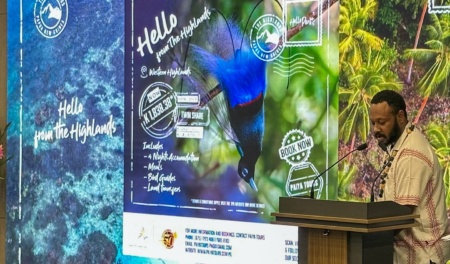
PNGTPA CEO Eric Mossman Uvovo shared that these initiatives mark an important step for the future of tourism in PNG:
“Tourism tells the story of who we are as Papua New Guineans – diverse, united, and welcoming. Hello Poro shows our people, our culture, and our destinations with authenticity and pride, while the subsidized Independence Tour Packages ensure that more people, both here at home and abroad, can share in these experiences. This is an investment in our long-term growth as a tourism nation.”

The launch event brought together tourism operators, media partners, and industry leaders. Guests enjoyed the premiere of the Hello Poro campaign video, cultural entertainment from Wan Squad, a showcase of the Independence Tour Packages, and a prize draw – setting the stage for a season of celebration and travel.
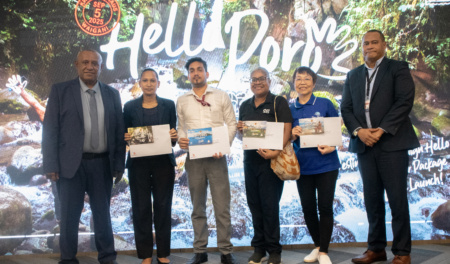
From the Highlands to the Islands, from history to adventure – this Golden Jubilee is your chance to explore Papua New Guinea like never before.
👉 Start your journey today. Visit www.papuanewguinea.travel/hello-poro to discover the packages.
Help share our story:
The Bomana War Cemetery is the largest war cemetery in Papua New Guinea and one of the most solemn and moving memorial sites in the Pacific. Located just outside Port Moresby, it serves as the final resting place for thousands of Allied soldiers who lost their lives during the Second World War, particularly in the brutal campaigns fought across the Owen Stanley Range and along the Kokoda Trail.
For many visitors — especially from Australia and New Zealand — a visit to Bomana War Cemetery Papua New Guinea is both personal and powerful. The rows of white headstones, immaculate grounds, and stories etched into the memorial walls provide a space for reflection and remembrance. As a key destination in WWII heritage tourism, the Port Moresby Bomana War Cemetery is a place where history, sacrifice, and human connection are deeply felt.

The Bomana War Cemetery was established after the Second World War by the Commonwealth War Graves Commission (CWGC) to honour Allied soldiers who died in Papua New Guinea during the Pacific campaigns. Many of those buried here lost their lives in the Kokoda Campaign, one of the most challenging and strategically significant battles fought between Australian and Japanese forces in the region.
Today, the cemetery contains 3,824 war graves, including 699 unidentified soldiers whose names are commemorated on memorial walls within the site. Each headstone, regardless of rank or nationality, reflects the CWGC’s commitment to equality in remembrance.
The cemetery not only provides a dignified resting place for the fallen but also stands as a powerful reminder of the human cost of war and the enduring bond between Papua New Guinea, Australia, and other Allied nations.
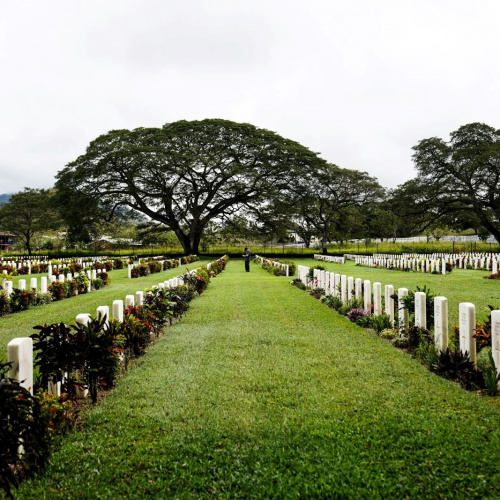
The Port Moresby Bomana War Cemetery is located approximately 19 kilometres northeast of the city centre, making it a less than 30 minute drive from the capitals cbd. The site is easily accessible by car or as part of a guided tour, and is often included in historical itineraries alongside the Kokoda Track Memorial at Owers’ Corner.
The cemetery is open daily to the public and free to enter, with well-maintained paths and gardens that invite quiet reflection. Visitors will find over 3,000 uniform white headstones, carefully arranged on green lawns, along with memorial plaques honouring the missing. The peaceful setting, framed by hills and tropical trees, contrasts deeply with the stories of hardship and sacrifice it represents.
While there’s no formal dress code, respectful attire and behaviour are expected. Visitors are encouraged to speak quietly, avoid stepping on graves, and treat the space with care and reverence. Photography is allowed, but should be done thoughtfully, particularly when other visitors are present.
A visit to the Bomana War Cemetery near Port Moresby offers a chance not only to pay respects, but to gain a deeper understanding of the lives lost and the historical ties that continue to connect Papua New Guinea with countries around the world.

The peaceful setting, carefully maintained by the Commonwealth War Graves Commission, invites quiet reflection. The sheer scale of the cemetery offers a powerful, human reminder of the lives lost in the Pacific War.
Many of the soldiers buried here died during the Kokoda Campaign, making the cemetery especially meaningful for those walking or learning about the trail. It provides important historical context before or after visiting the Kokoda Track.
The cemetery is often featured in:
Whether you’re tracing family history, exploring military history, or seeking a moment of quiet respect, Bomana War Cemetery provides a unique and meaningful stop in Port Moresby.
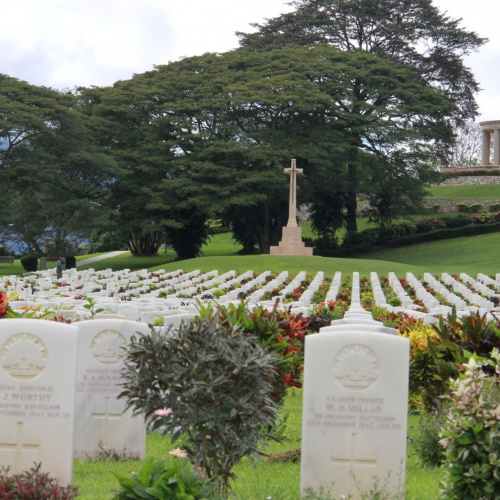
Located at the southern end of the Kokoda Trail, this memorial honours the soldiers who fought in one of WWII’s most grueling campaigns. The site offers sweeping views of the Owen Stanley Range and serves as a symbolic start or end point for those walking the trail. It pairs meaningfully with a visit to Bomana, deepening the historical context.
Just a short drive from the cemetery, this museum offers a curated look at Papua New Guinea’s cultural and wartime history. It’s a great place to explore traditional artefacts, WWII exhibits, and regional heritage collections.
For a contrasting experience, the Nature Park offers a relaxing and educational environment showcasing PNG’s native wildlife and tropical plant life. It’s well-suited for families or travellers looking to unwind after visiting more solemn sites.
Visit During the Dry Season
The cooler, drier months between May and October offer the most comfortable conditions for walking and sightseeing.
Consider a Guided Tour
Local guides and WWII history tours provide valuable context and can combine your visit with other significant sites, such as the Kokoda Track Memorial or Port Moresby’s war museums.
Prepare for the weather
The cemetery is open and exposed, with limited shade. Bring water, wear a hat, and apply sunscreen.
Respect the Space
As a war cemetery, visitors should dress modestly, speak quietly, and avoid stepping on graves. Photography is permitted but should be discreet and respectful.

Please help share our story:
Port Moresby a.k.a Amazing Port Moresby, is the capital of Papua New Guinea and the main gateway for international travellers arriving in the country. Sometimes seen as a brief stopover, the city actually offers a diverse mix of cultural, historical, and nature-based experiences that make it well worth exploring.
From its vibrant local markets and national landmarks to peaceful war memorials and wildlife parks, Port Moresby offers travellers a unique introduction to the heart of PNG. Whether you’re here for a few hours or a few days, this guide highlights some of the best things to do in Amazing Port Moresby.
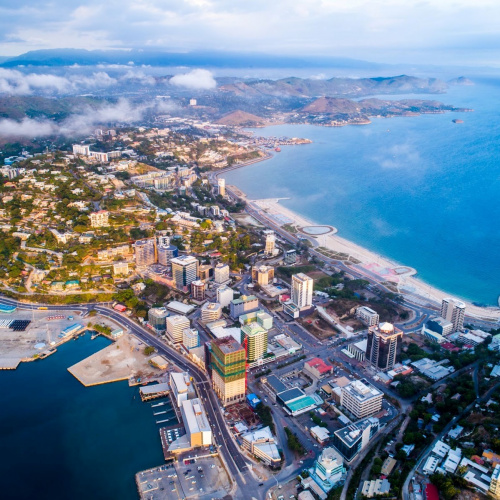
One of the top attractions in the city, Port Moresby Nature Park is the perfect place to experience Papua New Guinea’s unique flora and fauna in a safe and beautifully maintained environment. The park is home to native species like tree kangaroos, cassowaries, hornbills, and birds of paradise, as well as more than 100 native plant species displayed in tropical gardens.
It’s a great outing for families, nature lovers, or anyone wanting a gentle introduction to the country’s extraordinary biodiversity. Educational signage and regular wildlife talks help visitors learn more about PNG’s conservation efforts.
Key highlights:

Located just outside the city, the Bomana War Cemetery is the largest of its kind in Papua New Guinea and a deeply moving site to visit. Maintained by the Commonwealth War Graves Commission, it is the final resting place for more than 3,824 Allied soldiers who lost their lives during World War II, many of them in the Kokoda Campaign.
Set in peaceful, manicured grounds with rows of white headstones and memorial plaques, the cemetery offers a place of quiet reflection and historical significance.
Key highlights:
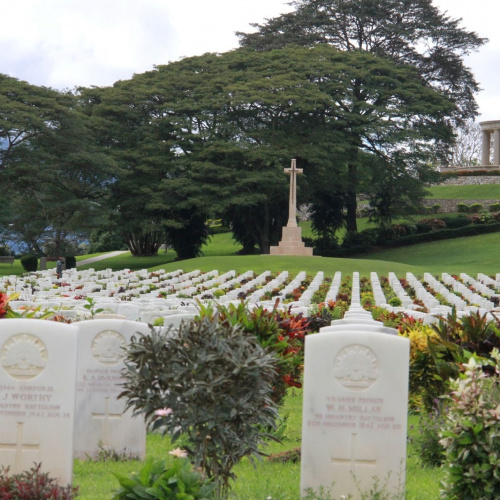
For a deeper understanding of Papua New Guinea’s rich cultural heritage, a visit to the National Museum and Art Gallery in Waigani is a must. The museum houses a wide range of exhibits that reflect the country’s diverse history, art, and traditions, with displays covering everything from tribal artefacts and ceremonial costumes to natural history and World War II relics.
It’s a great place to learn about PNG’s more than 800 distinct cultural groups, as well as the artistic and spiritual practices that define life across the country. The museum also features rotating exhibitions and educational programs, making it an informative and engaging stop for travellers.
Key highlights:

Ela Beach is Port Moresby’s most accessible and well-known beachfront, offering locals and visitors a scenic place to unwind by the sea. Recently revitalised, the area now features paved walking paths, shaded seating, public facilities, and open spaces perfect for picnics or relaxing with a view.
On weekends, Ela Beach often comes alive with markets, food stalls, and community events, making it a great place to experience local life in a laid-back setting. While not exactly a traditional swimming beach, it’s perfect for morning walks, sunset views, and people-watching.
Key highlights:
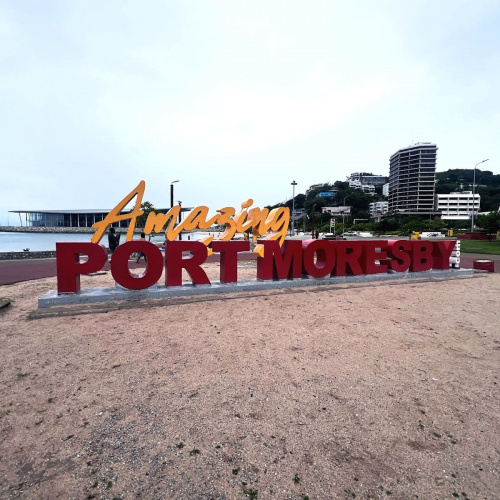
For a more immersive experience of daily life in Port Moresby, visit one of the city’s local markets, such as Gordons Market or Boroko Market. These bustling hubs are filled with fresh produce, tropical fruit, betel nut stands, handmade crafts, and woven bilums – PNG’s iconic hand crafted bags.
While markets can be crowded and busy, they offer a genuine look at the local economy and culture. It’s also a great place to support local vendors and find souvenirs that reflect traditional craftsmanship. Travellers are advised to go with a guide or local host and visit during the day for comfort and safety.
Key highlights:
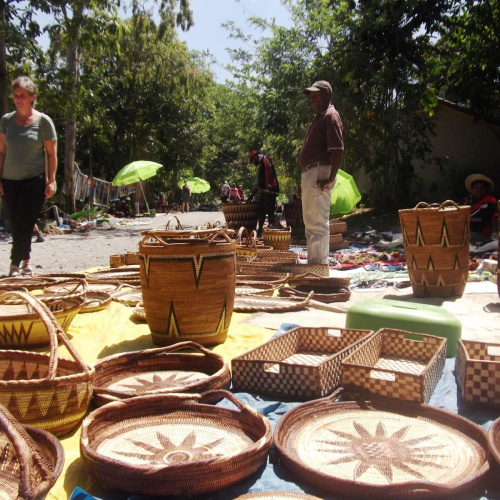
Just a short boat ride from Port Moresby, Loloata Island offers a peaceful coastal escape from the city. Known for its clear waters, coral reefs, and relaxed atmosphere, it’s a popular spot for day trips, snorkelling, diving, and weekend getaways.
The island is home to Loloata private resort with facilities for both day visitors and overnight guests. Activities include kayaking, paddleboarding, beachside dining, and exploring nearby dive sites.
Key highlights:
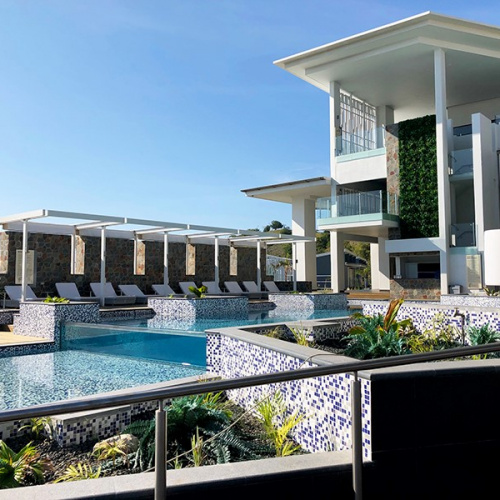
A striking blend of modern architecture and traditional design, Parliament House in Waigani is one of Port Moresby’s most recognisable landmarks. Opened in 1984, the building’s facade is inspired by a traditional haus tambaran (spirit house), reflecting PNG’s deep cultural roots alongside its national identity.
Visitors can view the exterior, explore the surrounding landscaped gardens, and, when parliament is not in session, join a guided tour to learn about the country’s political system and democratic history.
Key highlights:

Amazing Port Moresby is a place where you can connect with PNG’s living traditions. Throughout the year, the city hosts a variety of cultural events, sing-sings, and exhibitions that showcase the country’s rich diversity – especially during the Independence Day festivities on 16th September, when celebrations are at their peak.
Venues like the National Museum, Ela Beach, and local community centres often hold cultural displays and performances, especially around national holidays. Depending on your timing, you may also catch regional events or exhibitions that bring together tribes, artists, and performers from across the country.
Key highlights:

Best Time to Visit
The dry season, from May to October, offers cooler temperatures and more reliable weather, ideal for sightseeing and outdoor activities.
Getting Around
Public transport is limited and informal, so it’s best to use hotel transfers, registered taxis, or organised tours. Walking is possible in some areas, but avoid travelling alone at night.
Safety Advice
While many visitors enjoy Port Moresby without issue, it’s important to stay alert, avoid secluded areas, and keep valuables secure. Travel with a guide when exploring unfamiliar parts of the city.
Local Etiquette
Dress modestly, ask permission before taking photos, and be respectful when visiting markets, villages, or cultural sites.
Currency & Payments:
The local currency is the Papua New Guinean Kina (PGK). Card payments are accepted in larger hotels and shops, but carry some cash for markets and smaller businesses.
For all PNG travel tips see our travel tips page.
Please help share our story:
Papua New Guinea may be best known for its rugged mountains, rich tribal cultures, and world-class diving but it’s also home to some of the most underrated beaches in the South Pacific. From urban stretches like Ela Beach in Port Moresby to untouched islands fringed by coral reefs, the country’s coastline offers a surprising variety of beach experiences for travellers.
We’ve rounded up some of the best beaches in Papua New Guinea, including local favourites, remote hideaways, and easy escapes for first-time visitors.
Ela Beach formerly known as Era Kone, meaning ‘Our Beach’ in the Motuan language. It is one of the most recognisable and accessible beaches in Papua New Guinea. The site used to be a turtle nesting ground and was also referred to as ‘Turtle Beach’. Located in the heart of Port Moresby, this long stretch of sandy coastline has been recently upgraded with paved walkways, shaded seating areas, playgrounds, and outdoor fitness zones, making it a popular spot for locals and visitors alike.
Visitors to Ela Beach can take in the iconic APEC Haus, a striking landmark inspired by the traditional crab-claw sail of the Hiri Lagatoi. The area also offers fantastic photo opportunities, especially with its vibrant murals, sculptures and totem poles that celebrate local culture.
While it’s not a swimming beach in the traditional sense, it’s ideal for morning walks, sunset views, weekend markets, and cultural events. It’s also a great place to relax and people-watch, especially on Sundays when families gather to enjoy the open space.
Key features:
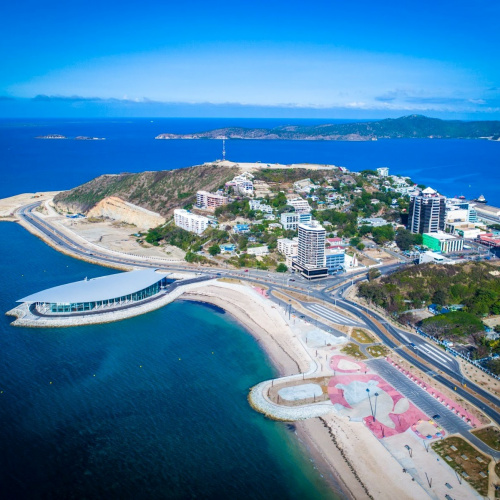
Tupira Beach is one of Papua New Guinea’s top surf destinations, located near the village of Ulingan in Madang Province. It’s home to the Tupira Surf Club, the country’s first and only internationally recognised surf camp. This remote beach offers consistent reef breaks suited to intermediate and advanced surfers, along with a relaxed, community-based atmosphere.
Even if you’re not a surfer, Tupira is worth visiting for its unspoiled setting, cultural connection with local communities, and opportunity to experience the north coast at a slower pace. The beach is managed in partnership with local landowners, supporting sustainable tourism and conservation.
A drive to Tupira won’t be possible without passing through the Madang township, a popular beach swimming spot is Jais Aben, just a 15-minutes drive from Madang town. The popular hotel has a quaint white sandy beach front, and provides kayaking and traditional canoes for guests.
Key features:
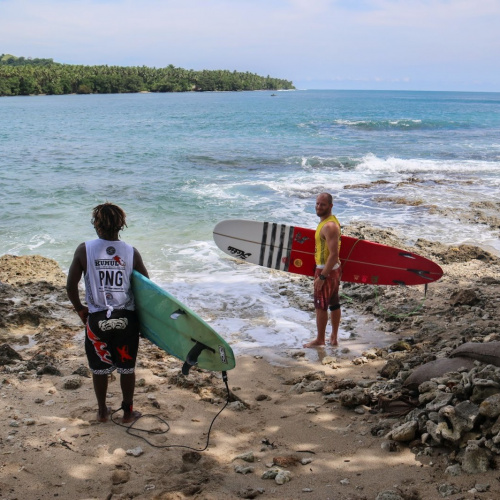
Under 30-minutes drive from Port Moresby – along the Magi Highway in the Central Province, Loloata Island Resort is a convenient tropical escape ideal for day trips or overnight stays. The island is home to a modern beachfront resort and offers easy access to some of the best snorkelling and diving sites near the capital.
The calm, shallow waters around the island are perfect for swimming, paddleboarding, or simply relaxing on the beach. With its close proximity to the city and well-managed facilities, Loloata is a great choice for travellers who want a beach experience without venturing too far from Port Moresby.
Key features:
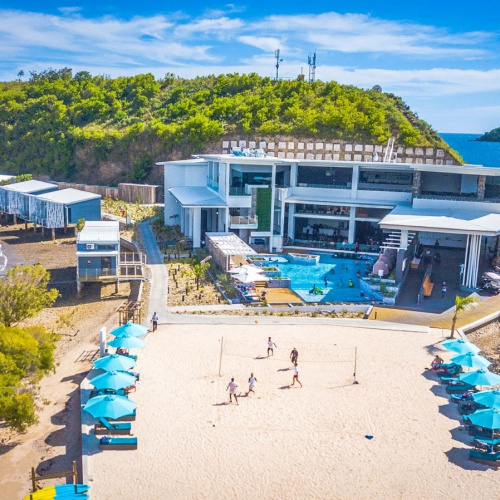
Kiriwina Island, the largest of the Trobriand Islands in Milne Bay Province, is known for its stunning white-sand beaches, crystal-clear lagoons, and strong cultural traditions. The island’s beaches are calm and shallow, making them ideal for swimming, snorkelling, and relaxing under the shade of coconut palms.
What sets Kiriwina apart is the chance to experience traditional village life alongside beautiful coastal scenery. Visitors are often welcomed with local dances, handicrafts, and storytelling, offering a beach experience that’s both scenic and culturally rich.
Other stunning beaches to explore in Milne Bay include the beachfront at Tawali Leisure & Dive Resort, known for its spectacular house reef; the pristine shores of the Conflict Islands—famous for their crystal-clear lagoons, vibrant coral reefs, and eco-conscious resort experience; the newly opened Mona’nauna Beach Retreat by VilLink Tours & Expeditions, just a 20-minute drive from Alotau; and the untouched beaches of Misima Island.
Key features of Kiriwina:

Misima Island is a remote and peaceful destination in Milne Bay Province, offering pristine beaches, rich marine biodiversity, and an authentic island atmosphere. Once home to a gold mine, the island has since returned to its quiet, natural state, making it perfect for travellers seeking seclusion and off-the-grid beauty.
The beaches here are wide, clean, and often completely empty. Offshore, vibrant coral reefs provide excellent snorkelling and diving, while inland walking trails and friendly villages offer a glimpse into daily life on a remote PNG island.
Key features:
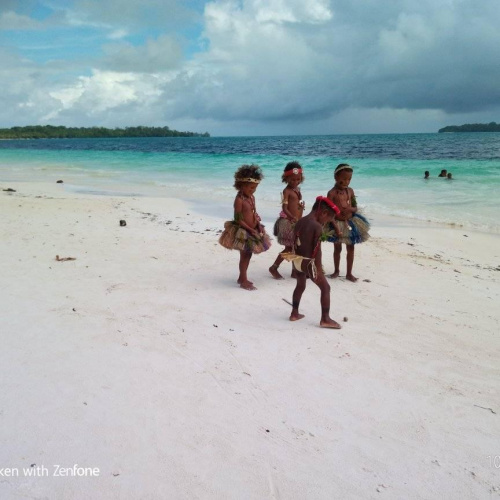
The Kavieng District of New Ireland Province is a tropical paradise known for its palm-fringed coastlines, crystal-clear waters, and laidback island charm. Dotted with picture-perfect islands and welcoming communities, this region is ideal for beach lovers, snorkelers, divers, and those seeking a peaceful escape.
Among the highlights is Tsoilik Island, part of the remote Tsoi Island group. Tsoilik is celebrated for its pristine white sand beaches, traditional guesthouses, and rich marine biodiversity—perfect for those after an authentic cultural and coastal experience. Closer to the mainland, Nusa Island Retreat, just a short boat ride from Kavieng town, offers a peaceful beachfront setting with great surf breaks and lagoon-style swimming.
Also nearby is Lissenung Island Resort, a secluded haven for divers and snorkelers. Surrounded by coral reefs and vibrant marine life, its soft sandy beach and relaxed vibe make it a favorite for ocean lovers. Further along the coast is Clem’s Place, a locally run beachfront eco-lodge known for its golden beaches, fishing excursions, and sunset views.
Key features:

The Tufi coastline, in Oro Province, is one of Papua New Guinea’s most unique beach environments. Carved by ancient volcanic activity, the area features deep fjords, hidden coves, and secluded beaches framed by dramatic cliffs and lush rainforest. This is not your typical tropical beach destination, it’s even more special.
Tufi offers spectacular snorkelling and diving straight off the shore, including access to vibrant coral reefs and WWII wrecks. Travellers can also explore the fjords by canoe, visit traditional villages, or simply relax on the small, sandy beaches tucked between the headlands.
Stay at the Tufi Dive Resort. Tufi Dive Resort offers a stunning escape with world-class diving and breathtaking views of Papua New Guinea’s fjord-like coastline. The nearby beaches are pristine and secluded, with powdery white sand and crystal-clear waters perfect for relaxation and adventure alike.
Key features:
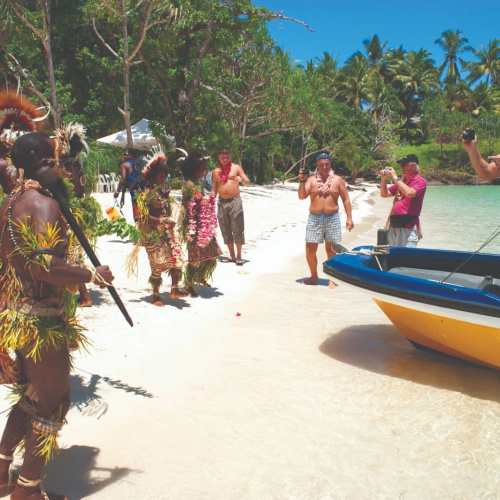
Rabaul is known for its dramatic volcanic landscape, and its beaches are no exception. Here you’ll find striking black sand beaches shaped by past eruptions, warm coastal waters, and a coastline steeped in both natural beauty and historical significance.
Many beaches around Rabaul offer views of the active Tavurvur Volcano, and some are close to WWII sites, making for a fascinating mix of relaxation and exploration. The calm waters are suitable for swimming, and snorkelling is available in areas with nearby reef systems.
The nearby Duke of York Islands offer some of the best beach island picnics and stays in East New Britain Province. Also, these great places offer wonderful beachfront experiences for their guests: Kokopo Beach Bungalow Resort and Rapopo Plantation Resort.
Key features:
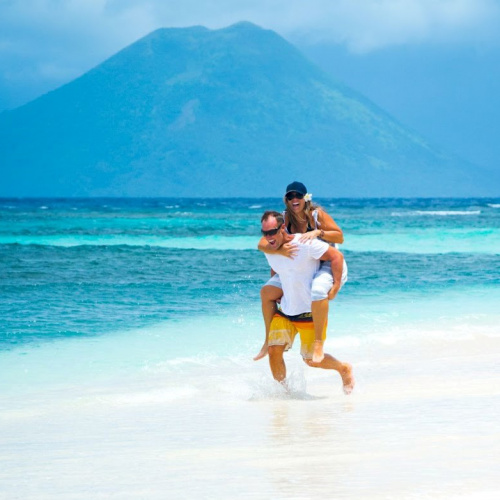
Papua New Guinea’s beaches are beautiful, diverse, and often untouched but visiting them comes with a few important considerations. To make the most of your beach experience, here are some practical tips for staying safe, respectful, and well-prepared.
Bring essentials: Many remote beaches don’t have shops or facilities. Pack reef-safe sunscreen, insect repellent, water, and snacks.
Respect local customs: Some beaches are near or owned by local communities. Always ask for permission if unsure, dress modestly when arriving or leaving, and avoid taking photos without consent.
Swim with care: Lifeguards are uncommon in PNG. Swim only in calm, clear areas, and avoid isolated beaches unless you’re with a guide or local host.
Bring snorkelling gear: In remote locations, you may not find rental equipment. Having your own mask and fins gives you access to reef experiences right off the beach.
Leave no trace: PNG’s beaches are often pristine, help keep them that way by taking your rubbish with you and avoiding damage to coral or wildlife.
Whether you’re looking to swim, snorkel, surf, or simply unwind under a palm tree, the country’s beaches deliver something unique at every turn. With far fewer crowds than other tropical destinations, these beaches offer a rare chance to enjoy nature, connect with local communities, and explore PNG’s wild, unspoiled charm.
Please help share our story:
Papua New Guinea is one of the most unique and diverse travel destinations in the world. With breathtaking landscapes, rich cultural traditions, and thrilling adventures, it offers experiences unlike anywhere else. From dense rainforests and rugged mountain trails to pristine coral reefs and vibrant festivals, PNG is a paradise for travellers seeking something truly special.
Papua New Guinea has something for everyone. This guide highlights the top 10 must-visit attractions, showcasing the best of the country’s natural wonders, cultural experiences, and historic sites.
The Kokoda Trail is one of the world’s most legendary trekking routes, attracting adventurers and history enthusiasts alike. This 96-kilometre jungle track played a crucial role in World War II, where Australian and Papua New Guinean forces fought in a gruelling campaign against Japanese troops. Today, hiking the Kokoda Trail is both a physical challenge and a moving historical experience, offering beautiful landscapes and a chance to connect with Papua New Guinea’s wartime past.
The dry season (May–October) is the best time to hike the Kokoda Trail, as the weather is more stable, with less rainfall and drier conditions. The wet season (November–April) brings heavy rains, making the trail muddy and difficult to navigate.

Port Moresby Nature Park is the best place in Papua New Guinea to see native wildlife up close. Located in the capital city, this award-winning park is home to tree kangaroos, cassowaries, birds of paradise, and other unique species found only in PNG. It also serves as a conservation centre, protecting endangered wildlife and educating visitors about the country’s incredible biodiversity.
Port Moresby Nature Park is open year-round, but visiting in the morning is best to avoid the afternoon heat and catch the animals when they are most active.
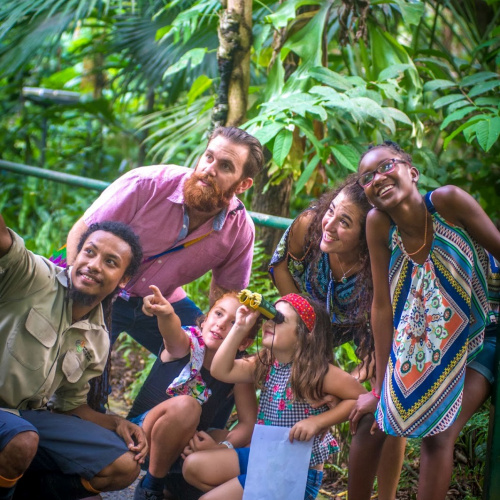
The Sepik River is one of Papua New Guinea’s most culturally rich and visually stunning regions. Known for its unique tribal traditions, intricate wood carvings, and sacred spirit houses, a visit to the Sepik offers a rare opportunity to experience authentic village life and time-honoured artistic traditions.
The dry season (May–October) is the best time to visit, as river levels are more stable, making it easier to navigate and access villages.
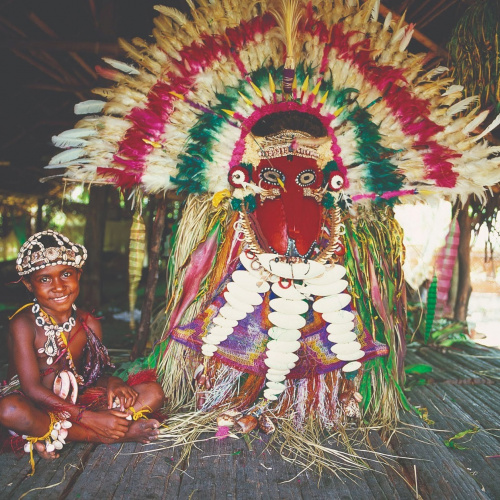
The Mount Hagen Cultural Show in the Western Highlands Province, is one of Papua New Guinea’s most famous and spectacular tribal festivals. This vibrant event brings together hundreds of tribes from across PNG, showcasing the country’s rich cultural diversity through elaborate headdresses, body paint, and traditional dances.
The Mount Hagen Cultural Show takes place in August. For those who can’t attend in August, there are a number of other shows and festivals throughout the year.
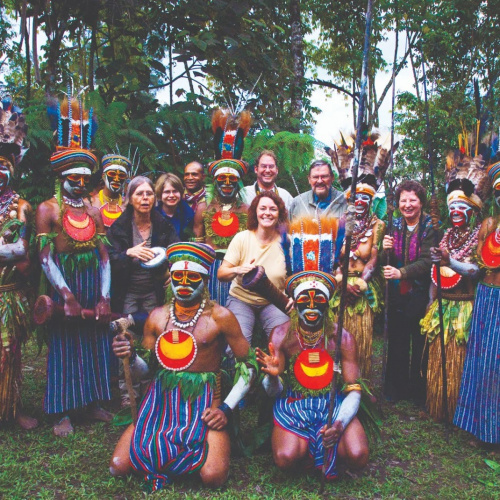
The Tufi Fjords are one of Papua New Guinea’s most breathtaking natural wonders, often referred to as the “Scandinavia of the Tropics”. These volcanic fjords, combined with coral reefs and rainforest, make Tufi a top destination for scenic beauty, cultural experiences, and world-class diving.
The dry season (May–October) offers the best diving conditions with excellent visibility and calm waters.
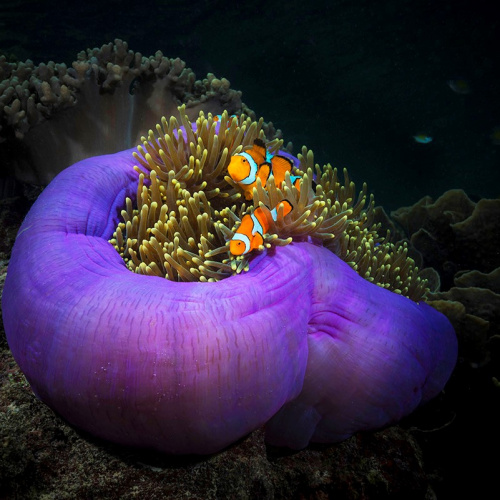
Rabaul, located in East New Britain Province, is famous for its volcanic landscapes and World War II history. The Tavurvur Volcano, an active stratovolcano, dominates the skyline and offers a dramatic setting for adventurous travellers. The town of Rabaul, partially buried in volcanic ash from past eruptions, is also home to historical sites, war relics, and spectacular viewpoints.
Rabaul is accessible year-round, but mornings are the best time to visit Tavurvur Volcano before the heat of the day sets in.

Milne Bay is a diver’s paradise, situated within the Coral Triangle, one of the most biodiverse marine ecosystems in the world. Known for its crystal-clear waters, vibrant coral reefs, and unique marine life, Milne Bay offers some of Papua New Guinea’s best underwater experiences.
The best diving conditions are from April to November, when underwater visibility is at its peak, and the seas are calmer.
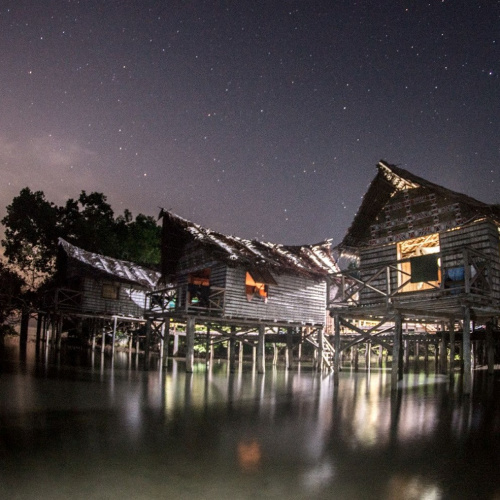
The Goroka Show is Papua New Guinea’s largest and most spectacular cultural festival, bringing together over 100 tribes in a dazzling display of traditional dress, song, and dance. Held every September, this event offers one of the best opportunities to witness PNG’s tribal heritage and diversity in one place.
The Goroka Show takes place every September. For those who can’t attend in September, there are a number of other shows and festivals throughout the year.

Madang is often regarded as one of the most beautiful towns in Papua New Guinea, surrounded by tropical beaches, lush rainforests, and vibrant coral reefs. This hidden gem offers the perfect blend of scenic beauty, water activities, and cultural exploration, making it an ideal destination for nature lovers and adventure seekers.
Madang is a year-round destination, but diving conditions are best from April to November.
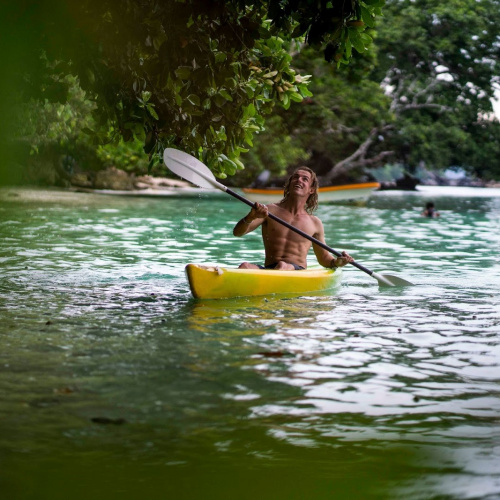
Bougainville Island is an untouched paradise offering a perfect escape for those seeking a more remote and authentic PNG experience. Known for its rugged mountains, hidden beaches, and rich history, Bougainville remains one of the country’s best-kept secrets, ideal for travellers looking for both adventure and cultural immersion.
The dry season (May–October) offers the best conditions for trekking and accessibility, as weather can impact roads and travel to remote areas.
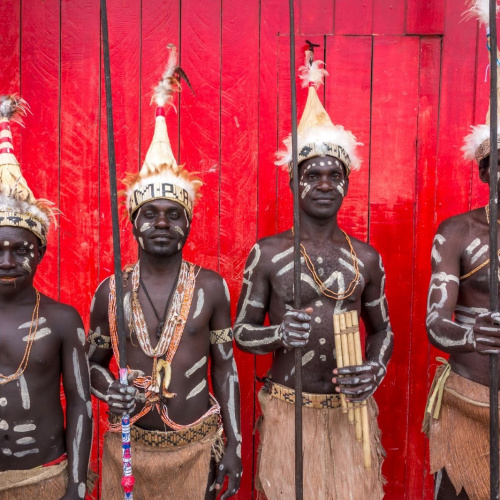
Papua New Guinea is a destination like no other, offering an extraordinary mix of cultural heritage, breathtaking landscapes, and adventures. With its rich traditions, stunning coastlines, towering mountains, and diverse wildlife, PNG promises once-in-a-lifetime experiences for those seeking adventure, history, and cultural immersion.
Ready to explore? Plan your journey based on what excites you most, whether it’s festivals and events, hiking, diving, or cultural discovery. Start planning your Papua New Guinea adventure planning today!
Please help share our story:
Celebrate Valentine’s Day and the entire month of love in Papua New Guinea, a destination that offers timeless romantic experiences—strolls along pristine beaches, candlelit dinners, breathtaking sunsets, secluded picnics, and serene canoe rides. This February, let love flourish amidst the diverse landscapes and cultures of this enchanting land.
Papua New Guinea’s vast array of islands provides unique romantic retreats. Here are some top picks for you and your loved one:
🏝️ Loloata Island Resort: Located in Central Province, Loloata Island Resort offers luxury in an island setting, featuring over-water bungalows, comfortable suites, and spacious villas. Watch an incredible Papua New Guinea sunset together, while sipping fresh coconut.
🏝️ Pero Pero Mangul Eco Guest House: Located on beautiful Karkar Island in Madang Province, this hidden gem is an hour’s scenic boat ride from Madang town. This beautiful tropical island provides an ideal escape. Couples can go hiking, swimming in the secluded beaches, meeting friendly villagers, roaming the coconut plantation – all while enjoying the delicious local cuisine.
🏝️ Tawali Leisure & Dive Resort: For an off-grid experience in Milne Bay Province, Tawali offers cozy lodgings among the well-canopied bungalows of East Cape’s lush tropical forest. Enjoy romantic walks along the forest board walks, snorkel or dive into the nearby house reef, savor fresh local seafood, and enjoy friendly banter with the local Tawala-speaking people.
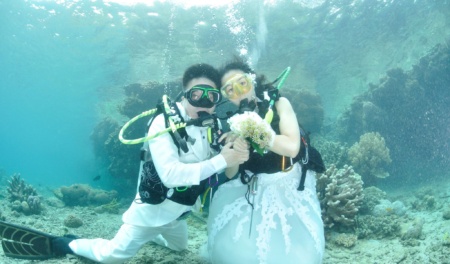
The natural beauty of Papua New Guinea captivates many travelers. Here are some places to immerse yourselves in nature:
🌿 Varirata National Park: Located near Port Moresby, this park offers walking trails through lush forests, providing opportunities to spot native wildlife and enjoy panoramic views. It’s an ideal spot for a romantic picnic amidst nature.
🌿 Port Moresby Nature Park: This park showcases the nation’s flora and fauna. Take a guided tour or stroll at your own pace, enjoy a meal at the Nature Café, or find a special souvenir at the gift shop to commemorate your visit.
🌿 Malyam Hotel in Wabag: Found deep in the heart of the Highlands, this locally owned hotel in Enga Province, is a must stay. Enjoy the comforts of a quality hotel experience, while exploring the surrounds of one of the country’s most culturally stunning Highlands provinces.
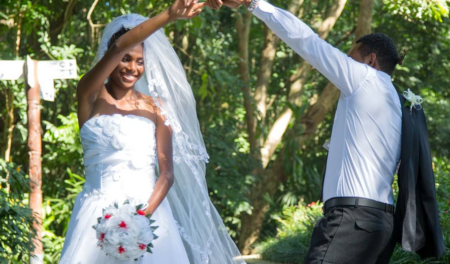
Deepen your connection by exploring the rich cultural heritage of Papua New Guinea together:
🛖 National Museum and Art Gallery: Discover the diverse cultures of Papua New Guinea through exhibits featuring traditional artifacts, contemporary art, and historical pieces.
🛖 Local Markets: Visit local markets to experience the vibrant daily life, sample traditional foods, and purchase handcrafted items as mementos of your journey, from popular events like the POM City Markets.
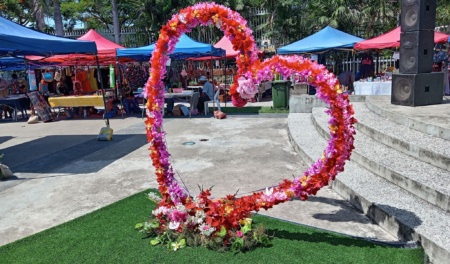
This Valentine’s Month create unforgettable memories with your loved one in Papua New Guinea, where adventure and romance await at every turn.◼️
Help share our travel ideas:
As the world welcomes the Chinese New Year of the Snake, it’s time to embrace new beginnings and embark on a journey of renewal and transformation. Papua New Guinea, with its beautiful landscapes and incredible culture, is the perfect destination to celebrate this special year. From the lush jungles that echo the snake’s wisdom and mystery to the winding Sepik River that mirrors the serpent’s elegance, PNG offers countless opportunities to start your year with extraordinary experiences.
The snake symbolizes wisdom, rebirth, and transformation—themes that resonate deeply with Papua New Guinea’s natural beauty and cultural richness. This Chinese New Year, immerse yourself in a destination that embodies these qualities and promises a truly unique adventure.
1. Witness the Lion Dance in Port Moresby:
🧧 Start your celebrations with the vibrant performances of the Cathay Club’s lion dancers in Port Moresby. The rhythmic drums, acrobatic tricks and colorful costumes create an electric atmosphere to ring in the New Year. Follow the Cathay Club Port Moresby Facebook page for more information.
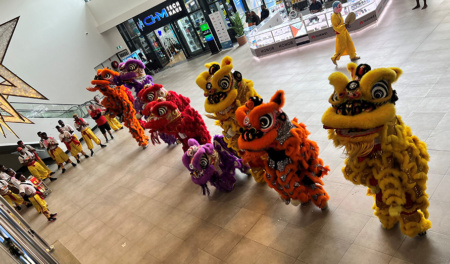
2. Relax at Mona’nauna Beach Retreat, Milne Bay:
🧧 Escape to the tranquil eco-friendly haven of Mona’nauna Beach Retreat in Milne Bay. Get away with family and friends for a picnic, enjoy the local East Cape cuisine and explore the nearby waterways by paddle board. Follow the Mona’nauna Beach Retreat Facebook page for more information.

3. Discover Simbu Hospitality at Betty’s Place:
🧧 Head to the Highlands of Simbu and stay at Betty’s Lodge, a charming getaway at the base of Mount Wilhelm, Papua New Guinea’s highest mountain. Savour the home-grown cuisine served by Betty and her team, and tour her famous trout farm. Follow Betty’s Place Facebook page for more information.
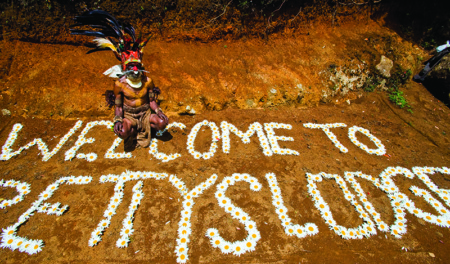
4. Explore Port Moresby Nature Park:
🧧 Embark on a ‘snaketastic’ adventure at the Port Moresby Nature Park. Meet the park’s resident snakes and other fascinating creatures while learning about PNG’s diverse wildlife. This family-friendly activity is both educational and fun.
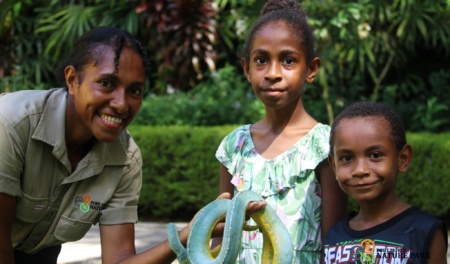
Papua New Guinea offers more than just a destination—it’s an invitation to reconnect with nature, culture, and yourself. Whether you’re exploring the vibrant Sepik River, hiking through lush rainforests, or enjoying the warm hospitality of the country, every moment in this unique country is a celebration of transformation and new beginnings.
So why not make this Year of the Snake truly unforgettable? Papua New Guinea awaits with a million different journeys, each as extraordinary as the next.◾
Australia is Papua New Guinea’s nearest neighbour, sharing historical and political ties, not to mention a deep love for sports like rugby league and cricket. Whether you’re a history enthusiast, a nature lover, or simply curious to explore, here are the top things to do in Papua New Guinea that celebrate our shared history and enduring friendship:
Experience the iconic Kokoda Trail, a symbol of bravery and cooperation during World War II. This challenging trek retraces the steps of the brave ANZAC soldiers and the legendary Papua New Guinean Fuzzy Wuzzy Angels who supported them. Walking the track is a deeply moving journey that highlights the bond forged during wartime. Click here: Trekking Papua New Guinea

Papua New Guinea is home to some of the world’s best diving spots, including Kimbe Bay, Tufi, and Milne Bay. Explore the New Britain Islands and Kimbe Bay on the live-aboard MV Oceania. At Tufi Dive Resort, there are several amazing dive spots, including the WWII Black Jack. Meanwhile, Tawali Resort in Milne Bay offers unforgettable diving tours that can bring you up close to giant manta rays. Click here: Diving Papua New Guinea
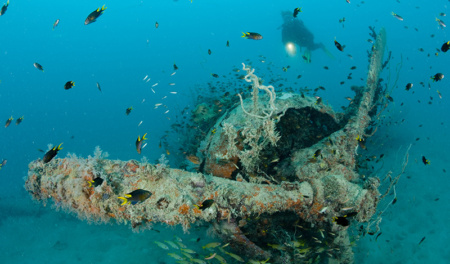
Attend one of Papua New Guinea’s many vibrant cultural festivals, such as the Hiri Moale Festival in Port Moresby or the Warwagira Mask Festival in Rabaul, taking place in April and July this year. These festivals showcase Papua New Guinea’s extraordinary cultural diversity through traditional dances, elaborate costumes, and community celebrations. Click here: Festivals in Papua New Guinea
Like Australia, Papua New Guinea is a biodiversity hotspot, with many similar flora and fauna that need our combined support. Make your holiday in PNG meaningful by staying at eco-friendly places where you can join programs involving coral and mangrove rehabilitation and turtle conservation. Consider Loloata Island Resort in the Central Province, Mona’nauna Beach Retreat in Milne Bay, or Lissenung in New Ireland Province. Click here: Places to Stay in Papua New Guinea
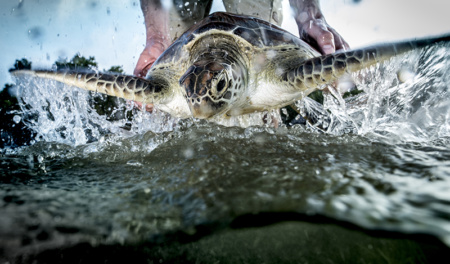
Discover key sites that highlight the intertwined histories of Australia and Papua New Guinea. Sign up for historical tours in cities and towns like Port Moresby, Lae, Rabaul, Wewak, and Alotau. These townships hold preserved memorials and landmarks that tell stories of our shared history, and they remain an integral part of our Papua New Guinea identity. Click here: Historical Sites in Papua New Guinea
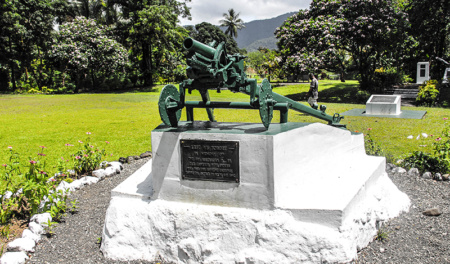
As Australians celebrate Australia Day, consider making plans to explore Papua New Guinea. Whether it’s through retracing historical connections, diving into natural wonders, or immersing yourself in rich cultural traditions, Papua New Guinea offers a wealth of experiences that highlight the unique bond between our two nations.◼️
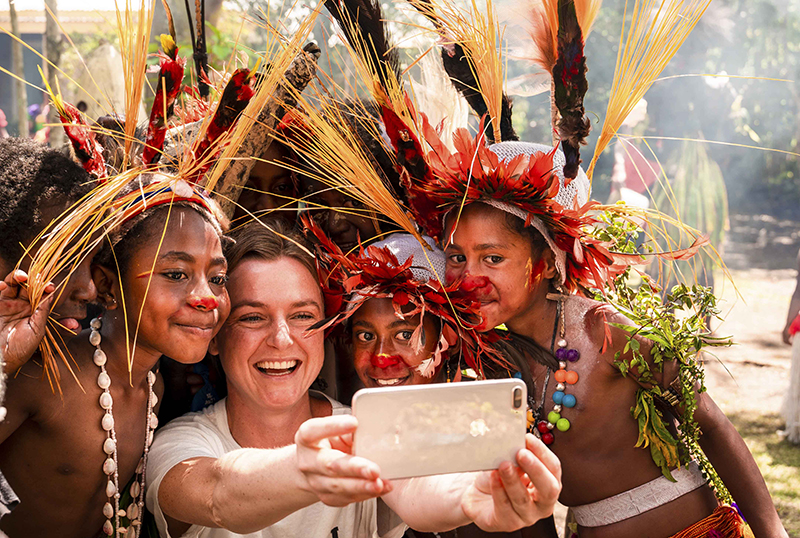
Nestled in the heart of Papua New Guinea’s mainland, the Eastern Highlands Province offers breathtaking views of mist-covered mountains and lush valleys. This peaceful region is perfect for nature lovers and those seeking a serene escape from the bustle of city life. The Asaro Mudmen, a famous local cultural group, offer a fascinating glimpse into the province’s traditions. With its cool climate, coffee plantations, and tranquil walking trails, the Eastern Highlands is a refreshing retreat where you can connect with nature and local culture. Visit the township of Goroka and its nearby main attractions: the Asaro Mudmen Cultural Centre, JK McCarthy Museum, Raun Raun Theatre, and the annual Goroka Show – PNG’s oldest cultural festival showcase.

Located to the northeast of Papua New Guinea, in the New Guinea Islands Region, New Ireland Province is a tropical haven with white sandy beaches, turquoise waters, and friendly locals. Kavieng, the capital, is the starting point for numerous adventures like diving, snorkeling, and exploring hidden coves. The province’s laid-back vibe and serene coastal beauty make it a perfect destination for relaxation. New Ireland is also known for its vibrant Malagan ceremonies, which add a cultural element to your peaceful getaway. Whether you are lounging on the beach or wandering through local villages, New Ireland offers tranquility at every turn. Our recommended places to visit include: the Turtle Sanctuary at Lissenung, Nusa Island Retreat, the Tsoilik Islands Guesthouse, Clems Place – all located within the Lavongai and Kavieng Urban LLGs. While along the Boluminski Highway, be sure to stop by these beautiful sites: Laraibina Eel Farm, Fissoa Blue Water Hole – then into Namatanai for some amazing surfing at Rubio Plantation Retreat.
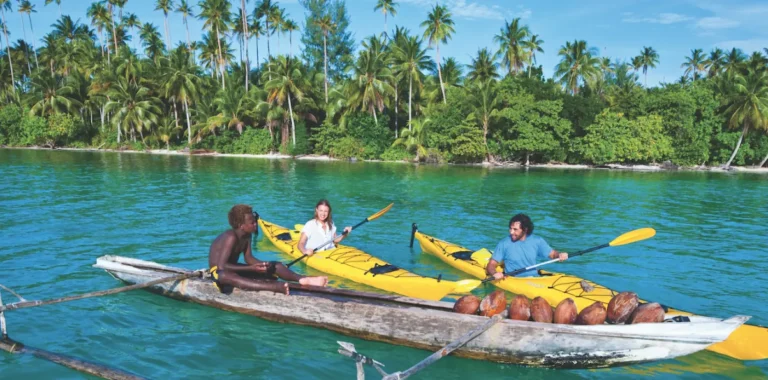
Vanimo, the capital of Sandaun Province, is a coastal town known for its untouched beauty and calm atmosphere. It’s a surfer’s paradise with some of the best, uncrowded waves in the region, but beyond the surf, Vanimo offers quiet stretches of beach for those simply looking to unwind. The laid-back lifestyle, coupled with spectacular ocean views and the sound of gentle waves, provides the perfect setting for relaxation. Whether you’re surfing or strolling along the beach at sunset, Vanimo’s peaceful environment is unmatched. While in Vanimo, visit the nearby township attractions like the: Lido Surfing Village, Awawi Falls, and Sandflies Beach. Vanimo, is also the only place in Papua New Guinea – apart from the capital city, Port Moresby, in which Pope Francis visited. Visitors may follow his papal journey in Vanimo, visiting places like the Holy Cross Cathedral and meeting some of the local diocese members.
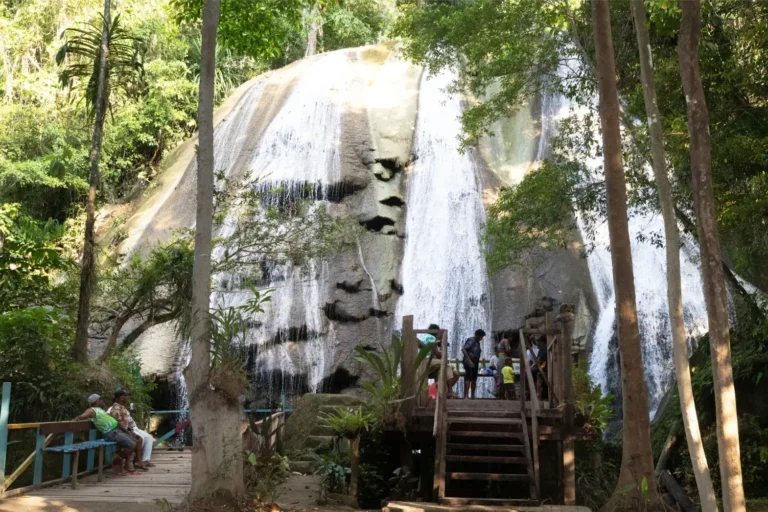
Manus Province, one of the least populated regions in Papua New Guinea, is a gem of solitude. The main island, Manus Island, is surrounded by crystal-clear waters teeming with marine life, making it an ideal place for: expeditionary cruising, scuba diving and fishing. You’ll find yourself immersed in nature, with pristine beaches and a peaceful atmosphere that makes you feel like you’re on your own private island. For those looking to disconnect and escape the world, Manus is the perfect destination. There are many incredible places to visit on Manus, take in the attractions of Lorengau township and the surrounding Seeadler Bay, go on an island-hopping adventure visiting the Mendrelin island sanctuary in the Pitilu group of islands – stay at the renovated Lorengau Harbourside Hotel. How about a visit to the south islands? Visit Nyapio, Peli and the ‘wind nation’ people of the M’Buke Islands.
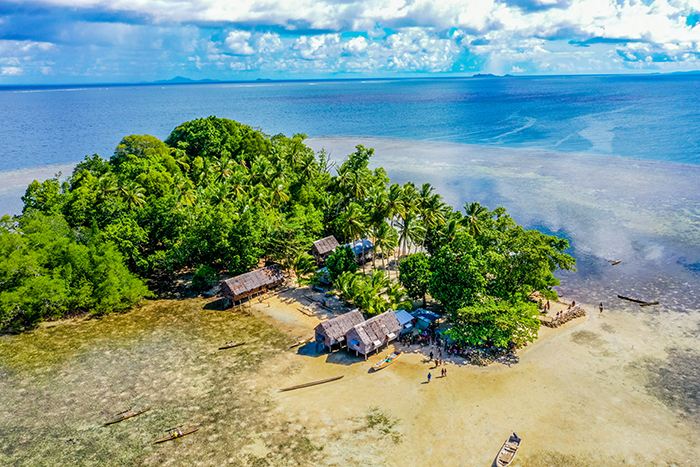
The Autonomous Region of Bougainville is a land of rugged beauty, where lush rainforests meet untouched beaches. Its tranquility is enhanced by the region’s strong community spirit and deep cultural roots. Bougainville is perfect for travelers seeking adventure with a side of peace. Whether you’re trekking through the mountainous terrain or snorkeling in crystal-clear waters, the region offers a balance of natural beauty and quiet seclusion. The peaceful surroundings make it ideal for reflecting, relaxing, and reconnecting with nature. What wonders this region holds, from an incredible war history – World War II and the tumultuous civil war that erupted in 1988 – there are many war relics and sites of great interest, particularly the Kieta War Memorial, General Yamamoto Crash Site in Buin, and the controversial Panguna Mine. The natural sites are also quite spectacular – try bird watching in South Bougainville, or relax on one of the stunning islands like the popular Uruna Bay Retreat at Pokpok Island. Cultural experiences are many – plan your visit around these annual festivals: Tama Festival, Mona Festival and the Chocolate Festival.
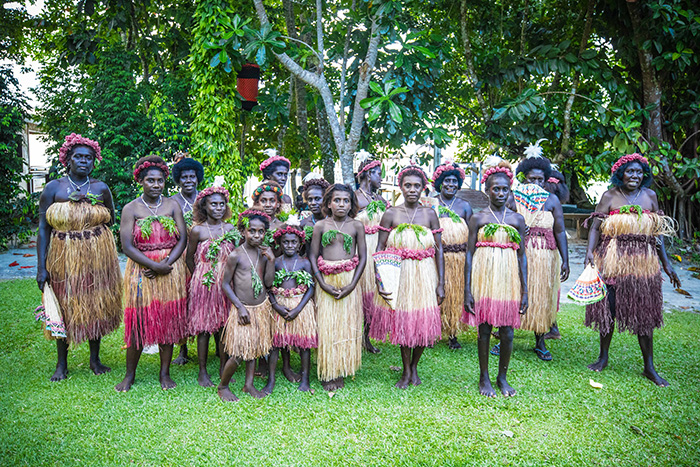
Papua New Guinea’s peaceful destinations offer a unique blend of stunning landscapes, rich culture, and serene atmospheres. Whether you’re seeking a coastal retreat, a mountain hideaway, or a cultural experience, these five destination —Eastern Highlands, New Ireland, Vanimo, Manus, and Bougainville—provide the perfect escape into tranquility.◼️
Help share our story:
In the Highlands Region of Papua New Guinea, sitting at an elevation of approximately 5,500 feet above sea level, lies the capital of the Western Highlands Province – Mount Hagen.
The cool weather and welcoming natural environment, offers a welcoming and laid-back atmosphere for all visitors to this small township.
Known as the food basket of Papua New Guinea, Mount Hagen is known for its superior fresh food produce – from pineapples, watermelon, strawberries, peanuts, sweet potatoes and more. These fruit and vegetable delights can be found at the busy Hagen Market in the heart of town.
In fact, gardening is a trait inherent to many Western Highlanders – a United Nation’s Heritage Site is found in the province, known as the Kuk Early Agricultural Site. Gardening tools were found at Kuk dating back more than 10,000 years, positioning Papua New Guinea as home to some of the world’s first gardeners.
Visitors will find locals very curious but altogether friendly and welcoming. The lifestyle in Mount Hagen is uncomplicated and laid-back.
There are several eateries that offer a fusion of modern and traditional cuisine. Plus, no meal can be experienced in Mount Hagen without sampling the delicious Hagen ‘kaukau’ or sweet potato.
Beyond the limits of Mount Hagen town, and onwards into the greater Western Highlands territory is where the real unfettered adventure begins. Bird watching, hiking, and cultural experiences are many. For instance, nature hikes at the beautiful Rondon Ridge boutique lodge, cultural experiences at Paiya village, and bird watching at the Kumul Lodge.
Visitors come from all over the world to experience the annual Hagen Show every mid-August. The range of cultural performances at this exciting festival are always a wonderful spectacle to watch, discover local arts and crafts, as well as participate in the ‘singsings’ (cultural dances).
Tourism in the Western Highlands is small but well established. There are daily commercial flights into Mount Hagen from Port Moresby via the national airlines Air Niugini and PNG Air. There are also several well-known accommodation providers and tour operators operating in Mount Hagen, including Trans Niuigni Tours, Paiya Tours, Rondon Ridge Lodge, Highlander Hotel, McRoyal Hotel, Kiminiga Hotel and more.
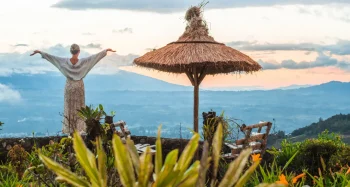
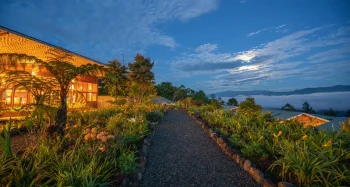
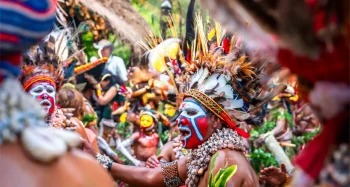
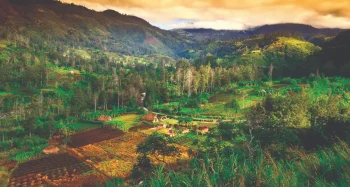
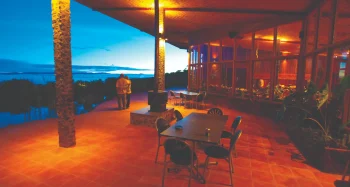

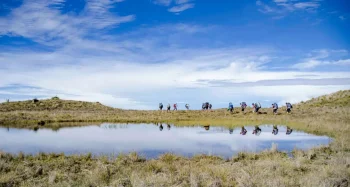


Take a guided trek up to the ancient volcanic summit of Mt. Giluwe. Experience the extraordinary scenery of one of the world’s famous ‘volcanic seven summits’ found right here in the Papua New Guinea Highlands.
Sample some fresh garden produce from Mount Hagen’s famous market. From fresh fruits, vegetables, nuts and organic spices. Fresh local produce is sold daily.
Join the many tribes showcasing different colorful traditional dressings on display at the annual Hagen Show. Become a part of the celebration – don the tribal face paints and dance along with the performers. A great chance to see all cultures from Papua New Guinea in one location.
Explore the history of this archaeological site and its contribution to agriculture in the Western Highlands and the rest of Papua New Guinea.
Here are some recommended places to stay in Mount Hagen:
Mount Hagen is a haven for food lovers, and there are many great places to sample the local cuisine – from informal roadside food markets to hotel restaurants. Highly recommended is the popular café: Kofi Kai – a great place to sample some of the best tasting coffee and fruit juices in PNG.
Unwind with a cold beer while gazing at the spectacular emerald mountains of the Highlands. Mount Hagen’s hotel bars offer both a quiet respite or opportunity for interesting conversations. The best place for a drink – whether you prefer a beer or a cocktail is at the Highlander Hotel. You can mingle at the Sports Bar, enjoy your beer with a hearty meal at the restaurant, or relax by the pool side.
Thank you for submitting your proposal for the Visital Arrival System (VAS) Upgrade! We will take a look at your submission, and should you be successful, we will contact you.
However, if you do not hear from us, please consider your submission as unsuccessful.
Kind regards,
The Papua New Guinea Tourism Promotion Authority

Thank you for submitting your business form. We will have our team look over the details and then contact you once we have added your details to our website.